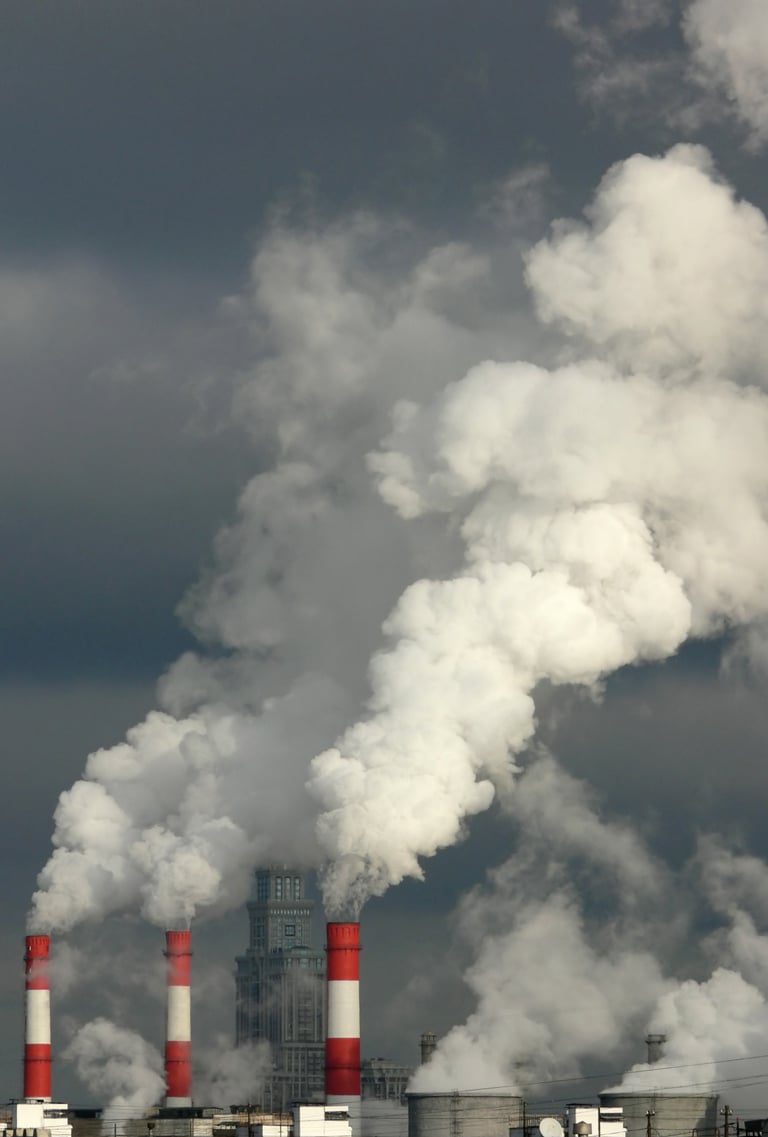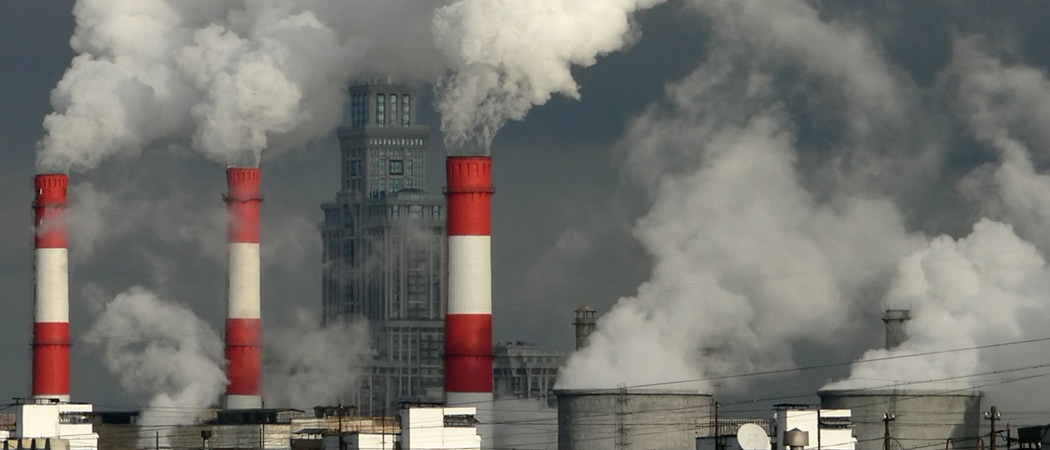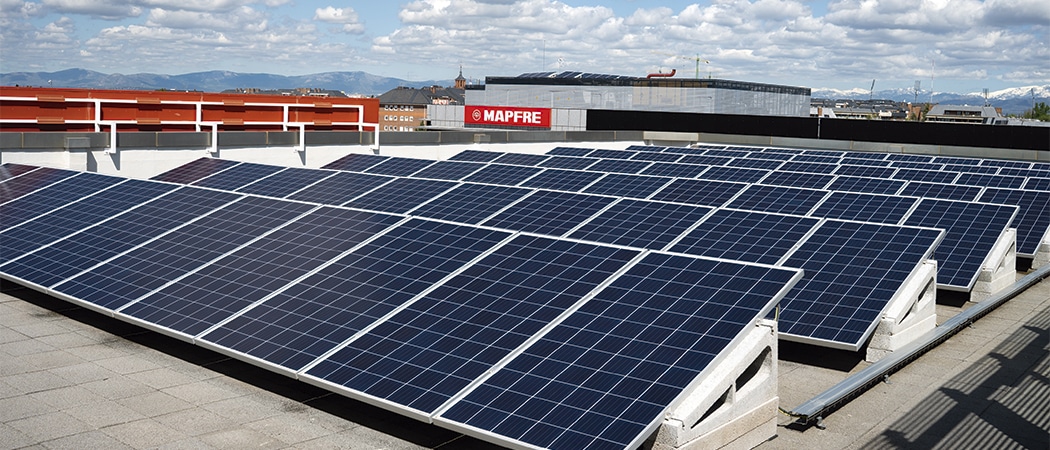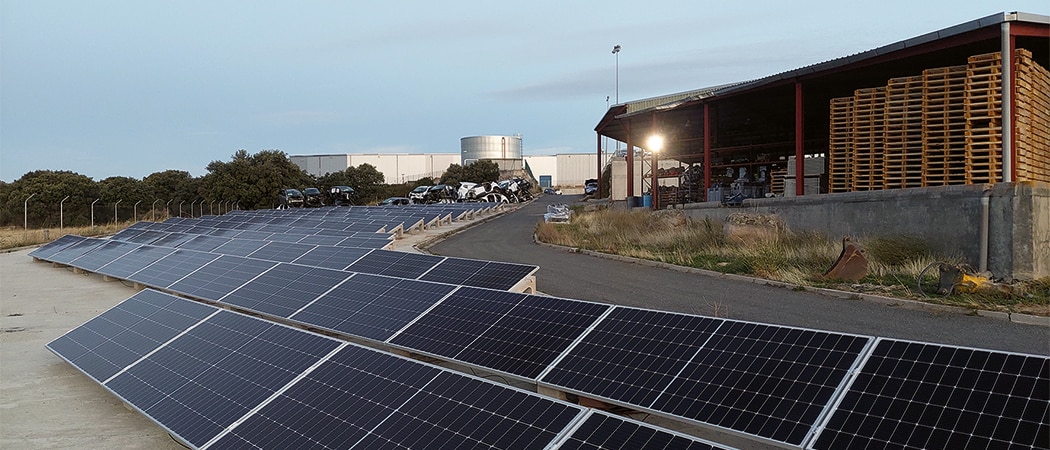At the head, Cesvimap solar installations in Ávila
TEXT DENISSE LÓPEZ | IMAGES ISTOCK
At MAPFRE, we are well aware that this transition concerns everybody, and we want to ensure that our activities and associated emissions contribute, at most, to a global temperature increase of 1.5 degrees Celsius. As a sign of this commitment, MAPFRE AM, the Group’s asset manager, which manages almost 40 billion euros worth of assets, has designed its own method for calculating the carbon footprint of the investment portfolio. The calculation is relevant, given that, aside from being dictated by more than one regulatory front “it serves to show the parameters and monitor the risks associated with climate change, and to elaborate a strategy for reducing company emissions,” according to Javier Miralles, a mutual fund manager at MAPFRE AM. This methodology, which attempts to complement the calculations established by other authorities, establishes different types of carbon footprint measurements in relation to investments according to the information that is reported and its objectives. To put it briefly, calculations can be established in absolute, relative, or intensity-weighted terms.
With respect to the first term, also known as “GHG Emissions”, it seeks to obtain the total annual emissions generated by portfolio assets and allocate as its own those that correspond to it based on the participation of the company being analyzed. The second, known as the “Carbon Footprint” calculates the absolute emissions of the previous point, but relative to the size of the investment. Finally, “GHG intensity of investee companies” calculations, according to experts, are the most important estimates for managers, given that they “provide information on each company’s efficiency, and thus on each fund and benchmark.

Thanks to its methodology, MAPFRE AM analysts can be secure in the knowledge that “the most sensible and well-thought-out solution possible has been found for optimizing data reporting, providing the most reasonable explanation possible of the calculations performed.” The regulation and calculations defined are being fully developed and do not encompass all asset types. Therefore, the methodology will likely be modified as regulations become more explicit about the issues raised.
Measuring the carbon footprint of investments is in a very early stage, both at a regulatory level and in terms of the reporting capacity and quality of the agents involved. This means that the calculations are still subject to change. At MAPFRE, this has been attributed to “a series of problems being detected, most of them theoretical in nature, that require conceptual developments that these regulations do not provide. There are a large number of assets that, not only at the conceptual level, but also at the level of disclosure, do not provide the data necessary for the calculation.”
In fact, one of the most widespread criticisms of the regulation, which is expressed by many interested parties in their queries related to the RTS (Regulatory Technical Standards), is that it “seems to only focus on and provide calculation suggestions for listed equities and corporate bonds, whereas portfolios are made up of many more asset types. The main problem, explains MAPFRE AM, is that “a series of difficulties arise when performing these calculations for other assets that the regulation does not provide for. This is the case, for example, of financial assets, futures, third-party funds, ETFs or government bonds. As the regulation continues to be defined, and as the exact method for carrying out the calculations becomes more specific and access to data is improved, carbon footprint reporting will become more and more precise. In any case, as a result of the methodology designed, MAPFRE now knows that between 2019 and 2021, it reduced the CO2 emissions associated with its investments by 1,167,483 tons. This is the equivalent of all emissions generated by a city of 200,000 inhabitants in a year.
The data have been reported with an eye to the commitments arising from the “Corporate Sustainability Reporting Directive proposal” (CSRD) and the “Sustainable Finance Disclosure Regulation” (SFDR), which provide for reporting on the company’s carbon footprint and considering its different scopes as a business.
Commitment to decarbonization
Considering the environmental impact of investments is part of MAPFRE’s strategy to decrease its carbon footprint in all of its activities and areas of influence. In the framework of the Strategic Sustainability Plan 2022-2024, and under the concept #PlayingOurPart, at MAPFRE we have committed to contributing to decarbonizing the economy, aiming to achieve carbon neutrality by 2050, i.e., zero net emissions in our insurance and reinsurance underwriting portfolios.
As part of its 21-30 Environmental Footprint Plan, the Group has established a commitment to reducing its carbon footprint by 50% by 2030 compared to 2019. It’s about improving on previous successes, such as in 2020 when GHG emissions were reduced by 67% compared to those recorded in 2013. Another line of work included in the plan is sustainable purchases. Under the “Green Purchasing” theme, the objective is to deploy a model for acquiring products, services, works and contracts based on environmental aspects that guarantee the minimum environmental impact during their life cycle.




